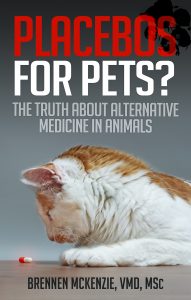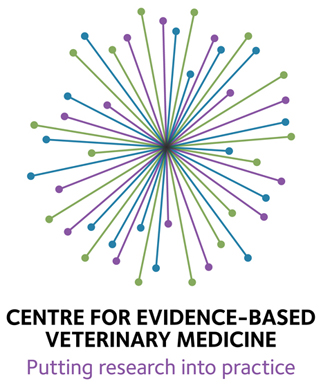This is a cross-post from Science-Based Medicine- CAM and the Law Part 3: Malpractice Law
It is with some trepidation I venture into the next subject in this series — malpractice law. This is a touchy subject for healthcare providers, for obvious reasons. Regardless of the flaws in the system, however, malpractice law is one of the mechanisms put in place by government to regulate the practice of medicine. Like the other such mechanisms touched on so far, licensure and scope of practice law, malpractice laws apply to alternative medicine practices in ways that are broadly similar, but sometimes subtly and significantly different, from how they apply to scientific medicine.
So far, alternative practitioners are sued for malpractice relatively infrequently compared with physicians, presumably because they represent a much smaller fraction of the care provided, they tend to be utilized by those with an ideological bias in favor of their approaches, and they are not viewed as nearly as rich a target for litigation. But this may change if the political and cultural winds blow in the direction of greater utilization of alternative medical approaches.
General Principles of Malpractice Law
In order to establish a claim of medical malpractice, a plaintiff must show four basic elements.1
1. A duty was owed by the defendant to the plaintiff.
2. That duty was breached.
3. The breach was the proximate cause of an injury.
4. The injury involved actual damages.
It is in the interpretation of what constitutes a duty and the breach thereof and the establishing of causation that much of the opportunity for judicial interpretation lies. Such interpretation also comes into play when typical defenses against malpractice claims are invoked, such as theories of contributory negligence and assumption of risk. One of the most contentious issues with regard to malpractice cases involving alternative therapies is what constitutes an appropriate standard or care, which defines the duty and condition of breach.
Standard of Care
Traditionally, medical doctors accused of malpractice were judged according to the so-called “local rule,” in which a doctor was expected to adhere to the standards of other doctors in his or her geographic area. This has been largely supplanted by the “national rule,” in which physicians are judged by the standard or other physicians in the same specialty.1 However, what about chiropractor, acupuncturists, naturopaths, etc? What standard is used to judge their duty and quality of care? (It may seem in the subsequent discussion and examples that I am picking on chiropractors. This is just an artifact of the volume of legal opinions concerning this method, since chiropractors are the most widespread, legally recognized, and often sued of alternative medicine practitioners).
A key case looked to as a precedent in many states was Kerkman v. Hintz, argued before the Supreme Court of Wisconsin.2 In this case, a patient was seen by a chiropractor, diagnosed with a cervical subluxation, and treated with several chiropractic adjustments. His condition worsened, whereupon he was seen by a neurosurgeon who identified a ruptured intervertebral disk. After two surgeries for this, the patient had significant lingering disability. The patient sued the chiropractor for malpractice, arguing that the D.C. ought to have recognized that his problem was not suitable for chiropractic treatment and referred him for appropriate care.
The legal standard of care invoked by the plaintiff in this case was a 1923 ruling in which it was held that “in evaluating a patient’s condition prior to treatment, a chiropractor must exercise the same degree of care and skill which is usually exercised by a recognized school of the medical profession.”3 However, the state supreme court overruled this precedent, arguing that while chiropractors were not a separately licensed profession in 1923, and so could be viewed as just another “recognized school of medicine,” by 1988 the practice of chiropractic had been defined, limited, and specifically distinguished from the practice of medicine by state licensing statutes. Since these statutes limit chiropractors to “the analysis and correction of subluxation,” it is not appropriate to allow or require them to make medical judgments that go beyond this. The court did not seem perturbed at all by the issue of whether the “subluxation” was a real medical entity or a phantasm. It was only concerned about whether it was a recognized entity from the point of view of state law, which it is.
Based on this reasoning, the court established a new standard for chiropractic.
In summary, we hold that a chiropractor has a duty to (1) determine whether the patient presents a problem which is treatable through chiropractic means; (2) refrain from further chiropractic treatment when a reasonable chiropractor should be aware that the patient’s condition will not be responsive to further treatment; and (3) if the ailment presented is outside the scope of chiropractic care, inform the patient that the ailment is not treatable through chiropractic means. In determining whether a chiropractor breaches these duties, the chiropractor is held to that degree of care, diligence, judgment, and skill which is exercised by a reasonable chiropractor under like or similar circumstances.2
Moreover, the court specifically exempted chiropractors in Wisconsin from any duty to refer patients for care by a physician.
Having explained to the patient that the problem is not within the chiropractor’s license to treat, the chiropractor does not have a duty to refer the patient to a medical doctor…because implicit in a requirement that a chiropractor refer a patient to a medical doctor is the imposition on the chiropractor to make a medical determination that the patient needs medical care, such a determination could not be made without employing medical knowledge. Because a chiropractor is not licensed to make such a determination, we hold that a chiropractor does not have a duty to refer.2
From a science-based perspective, of course, this seems ludicrous. Chiropractors are specifically licensed to treat an imaginary cause of diseases, and they are given the sole authority to decide as a community which illnesses will or will not respond to treatment of this faux etiology. They are expected to tell patients when their treatment is not going to work, but they aren’t expected to recognize if these same patients have a condition for which they should be seen by a medical doctor, because making that judgment would require them to know something about real medicine, which they are legally prohibited from doing.
Kerkman v. Hintz is a widely cited ruling that has had a significant impact on the assessment of standard of care for alternative medicine practitioners, but not all states follow this opinion, and other courts or state legislatures have imposed a duty to refer on chiropractors. The Supreme Court of New Jersey, for example, ruled in a 1984 case that chiropractors are “expected to diagnose and refer patients whose conditions require medical or other treatment.”4 Other appeals courts, in Washington and Colorado for example, have also upheld judgments against chiropractors for failing to recognize a problem they were not qualified to treat and for not referring the patient to a medical doctor.
And in California, the regulations that govern licensed chiropractors in that state specifically identify failure to refer a patient whose condition is not amenable to chiropractic treatment as an example of “unprofessional conduct.”5 This is ostensibly only intended to be the basis of action against the license of the chiropractor, but some scholars hold that such regulatory provisions can be the basis for establishing a standard of care in a malpractice case. There are, however, also rulings that do not allow practice act standards to be used in this way (e.g. Wengel v. Herfet Court of appeals of Michigan (1991) 6). As usual, then, there is a lack of consistency among the states in the legal theories or specific interpretations of relevant law and precedent.
Breach of Duty or Standard of Care
Once a standard of care is defined, a malpractice case hinges next on whether this standard has been breached. In addition to failing to recognize a problem not amenable to the alternative method of treatment being used, and failure to refer for medical care where required, there are several other ways in which alternative practitioners may breach the applicable standard of care.
For physicians utilizing alternative therapies, one possible breach of the standard of care is simply by utilizing methods that deviate from accepted medical practices. In a case involving Dr. Nicholas Gonzalez, of the infamous Gonzalez Regime for cancer treatment, the Supreme Court of New York articulated what seems to me a simple and rational view of the issue that is seldom seen outside of science-based medicine advocacy circles:
The standard for proving negligence in a malpractice case is whether the treatment deviates from accepted medical standards…it would seem then that no practitioner of alternative medicine could prevail on such a question as the reference to the term “non-conventional” may well necessitate a finding that the doctor who practices such medicine deviates from “accepted” medical standards. This indeed creates a problem for such physicians which perhaps can only be solved by having the patient execute a comprehensive consent containing appropriate information as to the risks involved.7
In other words, since alternative medicine by definition does not conform to accepted standards of care, it should only be defensible if it is undertaken as an experimental therapy, with all of the informed consent requirements and other protections for patients participating in clinical trials.
Of course, this standard only applies to medical doctors who employ alternative methods, so the principle unfortunately cannot be applied to chiropractors or others licensed in specific alternative methods who are held to different standards. And in practice, alternative therapies are usually not subject to automatic classification as malpractice by virtue of being alternative, because the courts have more frequently held that they should not be judged by the standards of conventional or scientific medicine, but only by their own internal standards.
Malpractice Defenses
The most straightforward defenses against a malpractice claim (insofar as any issue subject to litigation can ever be straightforward) are that the actions of the defendant were not the cause of any injury and that no actual damages were sustained. These are, for the most part, questions of fact which can often be substantiated in relatively objective ways. However, greater ambiguity and complexity are involved in defenses which address whether a duty of care exists or has been breached.
As we have seen, alternative practitioners have some avenues of defense in arguing that they cannot be guilty of breaching a duty based on standards of conventional medicine but only on those limited standards that pertain to their particular mode of treatment. One form this defense takes is the so-called “two schools of thought” doctrine.8 This is a Byzantine bit of legal reasoning in which the courts try to avoid adjudicating scientific disputes between factions within the medical community. This seems at first a quite appropriate goal given that lawyers, judges, and juries are not generally qualified in knowledge or training to determine the scientific truth behind disputes among scientists.
However, it leads to the unfortunate consequence that courts may make the mistake journalists so often make of treating the two “sides” in a scientific dispute as equal when in fact the dichotomy may actually be between an overwhelming majority backed by solid evidence and a few extremists with a wild, unsupported notion.
One case before the Supreme Court of Pennsylvania, Jones v. Chidester, illustrates this doctrine nicely.9 According to the court, “a medical practitioner has an absolute defense to a claim of negligence when it is determined that the prescribed treatment or procedure has been approved by one group of medical experts even though an alternate school of thought recommends another approach.”
The court then examines in detail different standards previous courts have used to determine whether a given position constituted a legitimate “school of thought” to which this rule could be applied. Some courts have used a quantitative standard, ruling that a “considerable number” of experts must approve of an approach for it to be deemed legitimate. Other courts have used a more qualitative standard, for example acceptance of the approach by “respectable, reputable, and reasonable” practitioners. The most generous standard seen in some states is requiring only a “respectable minority” of physicians to agree with an idea for it to be an acceptable “school of thought.” Ultimately, the Pennsylvania court chose to apply a combination of quantitative and qualitative standards:
Where competent medical authority is divided, a physician will not be held responsible if in the exercise of his judgment he followed a course of treatment advocated by a considerable number of recognized and respectable professionals in his given area of expertise.8
The court left the details of words like “considerable” and “recognized” or “respectable” to the discretion of other courts hearing particular cases. And they specifically placed the onus of supporting the contention that one’s approach is a legitimate “school of thought” on the defendant: “The burden of proving that there are two schools of thought falls to the defendant. The burden, however, should not prove burdensome…Once the expert states the factual reasons to support his claim that there is a considerable number of professionals who agree with the treatment…there is sufficient evidence to warrant an instruction to the jury on the two ‘schools of thought.’ It then becomes a question for the jury to determine whether they believe that there are two legitimate schools of thought such that the defendant should be insulated from liability.”8
Clearly, under this doctrine widely accepted practices like chiropractic and acupuncture would qualify as legitimate schools of thought, and no claim of liability based solely on the scientific evidence against their claims would be allowed. This leads to a pretty glaring inconsistency. The courts wish to avoid adjudicating scientific disputes, and yet as an alternative they make determining the legitimacy of a medical therapy a sort of popularity contest and then leave it to a jury to decide if the approaches employed are sufficiently popular to be acceptable.
Informed Consent and Assumption of Risk
In addition to straightforward factual defenses and to the approach of establishing that one’s treatment is consistent with the practices of a legitimate “school of thought” within the medical community, practitioners accused of malpractice can defend against liability by arguing that the patient had implicitly or expressly assumed any risk of treatment by assenting to the treatment, thus absolving the practitioner of liability for damages. As The U.S. Court of Appeals for the Second Circuit argued, “we see no reason why a patient should not be allowed to make an informed decision to go outside currently approved medical methods in search of an unconventional treatment. While a patient should be encouraged to exercise care for his own safety,[eschewing conventional treatment] is within a patient’s right ‘to determine what shall be done with his own body.”10 And if a patient makes such an informed decision, then it would make no sense to hold the practitioner liable for any undesirable outcome that was an inherent risk of the treatment.
In order to lay the basis for this assumption of risk defense, practitioners need to inform patients of the potential risks of treatment and of the alternatives. Courts have wrestled with the details of defining the parameters of this informed consent. There are two dominant standards in use. About half of the states use the so-called “patient standard,” in which a provider is expected to disclose any fact which might reasonably be expected to affect the patient’s decision whether or not to undergo the therapy. No expert testimony is required to establish if adequate disclosure occurred under this standard because this would imply that medical experts, rather than lay people, should determine what constitutes adequate disclosure, and this is considered by some to be paternalistic or open to abuse if physicians ultimately decide what patients need to know. 11
The rest of the states use the “professional standard,” which requires disclosure of any fact that a reasonable physician in the same circumstances would disclose. Under this theory, expert testimony is needed to establish what a “reasonable physician” would be expected to do in the specific circumstances and whether or not the defendant did it.12
How then are the principles of informed consent and assumption of risk applied in malpractice cases associated with alternative medicine? In one scenario, a provider may be sued for failing to adequately disclose the risks of forgoing conventional medical care.
An example of this is the case previously referenced, Charell v Gonzalez, in which a victim of the Gonzalez cancer regime sued Dr. Gonzalez after undergoing his bogus treatment. In this case, the state supreme court did find that Dr. Gonzalez failed to provide adequate disclosure concerning the risks of his therapy and of eschewing conventional cancer treatment. However, the court also concluded that the patient “was a well-educated person who, together with her husband and daughter, did a significant amount of investigation regarding the treatment…and hence became quite knowledgeable on the subject…[Thus] it was within the province of the jury, based on the evidence, for it to find that plaintiff independently obtained sufficient information about the treatment so as to conclude that there was an implied assumption of risk when she agreed to follow defendant’s protocol.”7
By this reasoning, it would seem very difficult for someone who sought out an alternative therapy to successfully sue for malpractice even if the risks of the therapy were not adequately explained to them since it might be assumed by the court that in seeking the therapy they had discovered and understood the risks well enough to make an informed choice to accept them.
Of course, alternative practitioners may be sued, just like physicians, for failing to adequately disclose the risks of the therapies they provide. When his happens, the courts will judge the duty to disclose under whichever of the two standards described above is used in that jurisdiction, the “patient” or “professional” standard. However, the details of the risks involved and what the practitioner can reasonably be required to know and disclose are likely to be judged by the standards of the particular “school of thought” the practitioner belongs to.
Therefore, for example, the court may view the risk of stroke associated with cervical chiropractic manipulation as chiropractors do, as an unproven or at least very rare complication balanced by the overall safety and efficacy of the treatment, rather than as a thoroughly unjustifiable risk of an ineffective and unscientific treatment, as many of us in scientific medicine view it.
In a strange twist to informed consent rules, some physicians have been sued for not informing patients of the availability of alternative therapies. So far the courts seem to have taken the position that there is no duty to inform a patient of the availability of a therapy that is generally not accepted by the medical community. However, as more doctors and medical schools integrate alternative therapies into their practices, there may come a time when not telling a patient that they could try acupuncture, chiropractic, or some other form of alterative therapy instead of conventional treatment could be viewed as a failure to provide sufficient disclosure to allow an informed consent/assumption of risk defense.
Summary
As usual, of course, the rules and standards set by state legislatures and courts are inconsistent and variable, so firm, predictable rules cannot be deduced. However, it is possible to make a few tentative generalizations about the position of alternative medicine with regard to malpractice law:
- Alternative therapies generally cannot be successfully attacked through malpractice litigation solely on the basis of their implausibility or lack of convincing scientific evidence for safety and efficacy. Particularly in the case of widely accepted and often state licensed approaches such as acupuncture and chiropractic, charges of malpractice will be judged by standards set within the paradigm of the particular method, not by any broader scientific or evidence-based standard.
- Alternative medicine providers can, of course, be guilty of malpractice if they perform their interventions below the commonly accepted standards of their own communities. They may also have liabilities for injuries caused by discouraging patients from seeking conventional care and, in some jurisdictions, for not recognizing when a patient’s condition is beyond the scope of their form of treatment and subsequently referring the patient for treatment by a medical doctor.
- The courts and legislatures give great weight to the autonomy of the individual to make decisions about their own healthcare, and they are likely to view sympathetically malpractice defenses based on the theory that by choosing an alternative approach a patient understands and assumes the risk of that approach.
- The licensure of alternative methods by states, their integration into academic institutions, and the tacit approval of their legitimacy conveyed by government organizations like NCCAM and insurance provider who pay for them all contribute to the perception of these methods as legitimate alternatives to scientific medicine, and this makes it very difficult for patients injured by these approaches to successfully pursue a malpractice action despite the lack of good scientific evidence that these methods are safe and effective. As we have seen repeatedly, when evaluating alternative medicine the law is far less concerned with scientific evidence than with political, cultural, and philosophical arguments.
References
- Jesson LE, Tovino SA. Complementary and alternative medicine and the law. Durham (NC), USA: Carolina Academic Press, 2010 Return to text.
- Kerkman v. Hintz, Supreme Court of Wisconsin, 418 N.W. 2d 795 (1988). cited in Jesson LE, Tovino SA. Complementary and alternative medicine and the law. Durham (NC), USA: Carolina Academic Press, 2010. p. 103-11. Return to text.
- Kuechler v. Volgman, 180 Wis. 238, 192 N.W. 1015 (1923). cited in Jesson LE, Tovino SA. Complementary and alternative medicine and the law. Durham (NC), USA: Carolina Academic Press, 2010. p. 105. Return to text.
- Rosenberg v. Cahill, 492 A.2d 371, N.J. (1984). from website: http://www.fpamed.com/forensic_psychiatry/2008/05/a-paradox-about.html Return to text.
- State of California, Board of Chiropractic Examiners Rules and Regulations, Rev. June, 2010. Article 2, § 317. from website: http://www.chiro.ca.gov/res/docs/pdf/business/chiroregs_june2010.pdf Return to text.
- Wengel v. Herfert, Court of Appeals of Michigan, 473 N.W.2d 741 (1991). cited in Jesson LE, Tovino SA. Complementary and alternative medicine and the law. Durham (NC), USA: Carolina Academic Press, 2010. p. 114-16. Return to text.
- Charell v. Gonzalez, Supreme Court of New York, New York County, 173 Misc. 2d 227 (1997). cited in Jesson LE, Tovino SA. Complementary and alternative medicine and the law. Durham (NC), USA: Carolina Academic Press, 2010. p. 117. Return to text.
- Jesson LE, Tovino SA. Complementary and alternative medicine and the law. Durham (NC), USA: Carolina Academic Press, 2010. p. 146-152. Return to text.
- Jones v. Chidester, Supreme Court of Pennsylvania, 531 Pa. 31 (1992). cited in Jesson LE, Tovino SA. Complementary and alternative medicine and the law. Durham (NC), USA: Carolina Academic Press, 2010. p. 146-152. Return to text.
- Schneider v. Revici, United States Court of Appeals for the Second Circuit, 817 F.2d 987 (1987). cited in Jesson LE, Tovino SA. Complementary and alternative medicine and the law. Durham (NC), USA: Carolina Academic Press, 2010. p.152-4. Return to text.
- Jesson LE, Tovino SA. Complementary and alternative medicine and the law. Durham (NC), USA: Carolina Academic Press, 2010. p. 160-73. Return to text.
- Jesson LE, Tovino SA. Complementary and alternative medicine and the law. Durham (NC), USA: Carolina Academic Press, 2010. p. 174-8. Return to text.









